Jupiter (filtered) By Judith Schmidt.
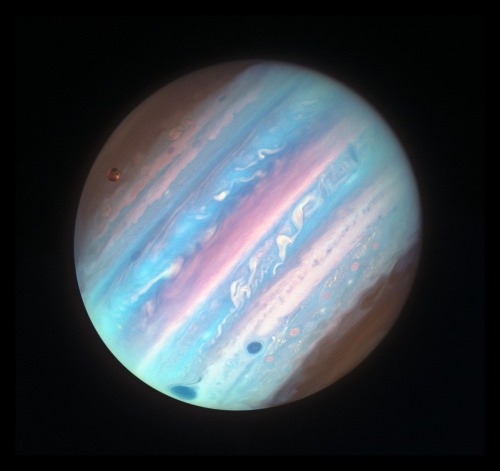
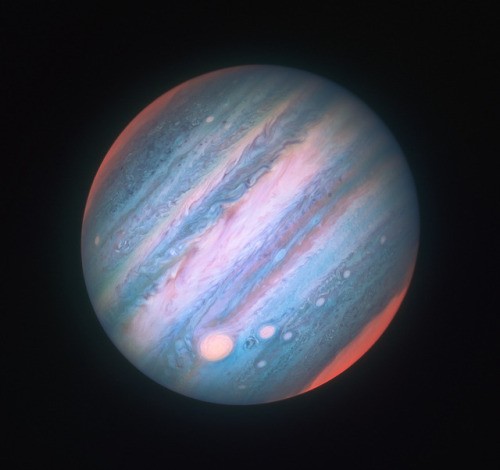
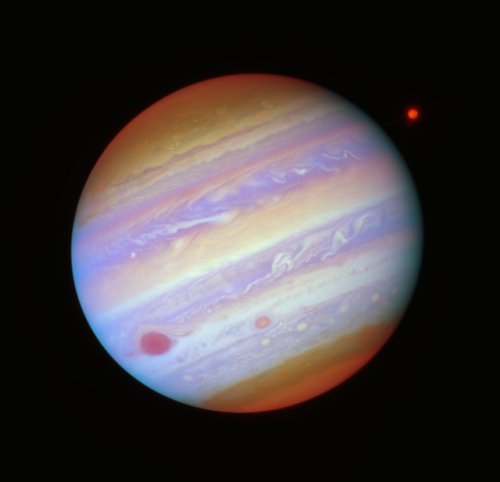
Jupiter (filtered) by Judith Schmidt.
More Posts from Sidusglacies and Others
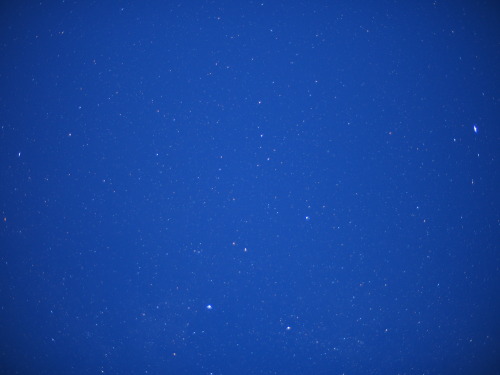
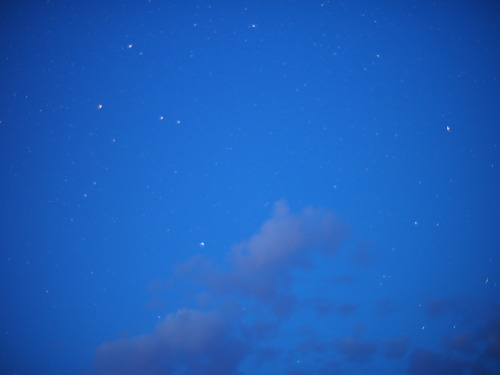
Stars again














500,000 Suns by Paul Blake




These beautiful Kelvin-Helmholtz clouds were spotted over Lincolnshire on December 19th. They form between two layers of air, one of which is moving faster than the other. Although that situation is not very unusual, the conditions have to be just right for visible clouds to form at that interface between layers, and the clouds themselves are typically short-lived. This set is particularly lovely with its smooth curves and breaking wave form. If you, like me, love these clouds but never manage to see them yourself, you can always try wearing some instead! (Image credit: A. Towriss; via BBC News; submitted by Vince D.)

Asteroid J002E3’s orbit in 2002-2003.
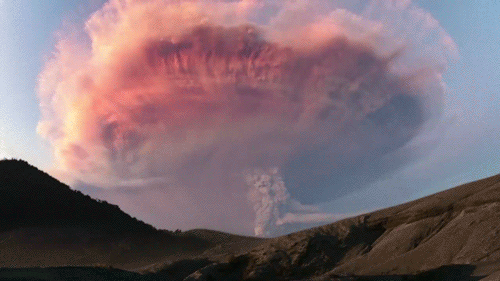
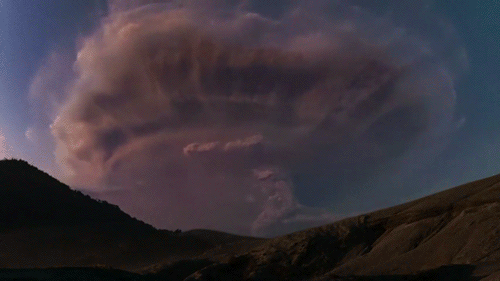
Lightning inside a volcanic ash cloud in Patagonia.

Comet Hyakutake


What is this dark spot in the center of the image?
This NASA/ESA Hubble Space Telescope image features the star cluster Trumpler 14. One of the largest gatherings of hot, massive and bright stars in the Milky Way, this cluster houses some of the most luminous stars in our entire galaxy.
The prominent dark patch, close to the centre of the cluster is a so called Bok globule: this is an isolated and relatively small dark nebula, containing dense dust and gas. These objects are still subjects of intense research as their structure and density remains somewhat a mystery.
Credit: NASA & ESA, Jesús Maíz Apellániz (Centro de Astrobiología, CSIC-INTA, Spain)

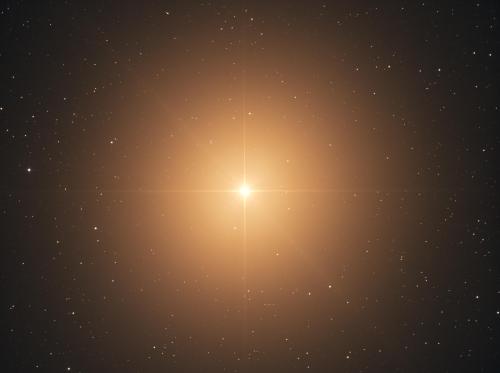
Betelgeuse is still there, but had to check
-
 shapeshifting-entity liked this · 1 month ago
shapeshifting-entity liked this · 1 month ago -
 korallkaktus reblogged this · 1 month ago
korallkaktus reblogged this · 1 month ago -
 3907 liked this · 2 months ago
3907 liked this · 2 months ago -
 yourbloodtasteslikewine reblogged this · 2 months ago
yourbloodtasteslikewine reblogged this · 2 months ago -
 apoesiaeeu liked this · 2 months ago
apoesiaeeu liked this · 2 months ago -
 extpursuedbyabear reblogged this · 2 months ago
extpursuedbyabear reblogged this · 2 months ago -
 extpursuedbyabear liked this · 2 months ago
extpursuedbyabear liked this · 2 months ago -
 heraclitan liked this · 2 months ago
heraclitan liked this · 2 months ago -
 localgothcowghoul reblogged this · 2 months ago
localgothcowghoul reblogged this · 2 months ago -
 localgothcowghoul liked this · 2 months ago
localgothcowghoul liked this · 2 months ago -
 tenderlyhands reblogged this · 2 months ago
tenderlyhands reblogged this · 2 months ago -
 tenderlyhands liked this · 2 months ago
tenderlyhands liked this · 2 months ago -
 moonstonemaiden reblogged this · 2 months ago
moonstonemaiden reblogged this · 2 months ago -
 habaebiti reblogged this · 2 months ago
habaebiti reblogged this · 2 months ago -
 butaefly reblogged this · 2 months ago
butaefly reblogged this · 2 months ago -
 mortuany reblogged this · 2 months ago
mortuany reblogged this · 2 months ago -
 light-sparkle reblogged this · 3 months ago
light-sparkle reblogged this · 3 months ago -
 soniciselectricc liked this · 3 months ago
soniciselectricc liked this · 3 months ago -
 dreamyxbitch reblogged this · 3 months ago
dreamyxbitch reblogged this · 3 months ago -
 hippiemeg368 liked this · 3 months ago
hippiemeg368 liked this · 3 months ago -
 martian-matter reblogged this · 3 months ago
martian-matter reblogged this · 3 months ago -
 settlemedown liked this · 4 months ago
settlemedown liked this · 4 months ago -
 hinkypunk liked this · 4 months ago
hinkypunk liked this · 4 months ago -
 unamedialuna reblogged this · 4 months ago
unamedialuna reblogged this · 4 months ago -
 imageness-retro reblogged this · 4 months ago
imageness-retro reblogged this · 4 months ago -
 criadacorte reblogged this · 4 months ago
criadacorte reblogged this · 4 months ago -
 i-lucido reblogged this · 4 months ago
i-lucido reblogged this · 4 months ago -
 schlumpfleiin reblogged this · 4 months ago
schlumpfleiin reblogged this · 4 months ago -
 schlumpfleiin liked this · 4 months ago
schlumpfleiin liked this · 4 months ago -
 dangerousbrunette reblogged this · 4 months ago
dangerousbrunette reblogged this · 4 months ago -
 dangerousbrunette liked this · 4 months ago
dangerousbrunette liked this · 4 months ago -
 mafaldapires reblogged this · 4 months ago
mafaldapires reblogged this · 4 months ago -
 cancerianjo3 reblogged this · 4 months ago
cancerianjo3 reblogged this · 4 months ago -
 burning-young reblogged this · 4 months ago
burning-young reblogged this · 4 months ago -
 aahleahh reblogged this · 4 months ago
aahleahh reblogged this · 4 months ago -
 aahleahh liked this · 4 months ago
aahleahh liked this · 4 months ago -
 celustial reblogged this · 4 months ago
celustial reblogged this · 4 months ago -
 stargiirls reblogged this · 4 months ago
stargiirls reblogged this · 4 months ago -
 stargiirls liked this · 4 months ago
stargiirls liked this · 4 months ago -
 sixfeetinthedark liked this · 4 months ago
sixfeetinthedark liked this · 4 months ago -
 ispkfmyslf reblogged this · 4 months ago
ispkfmyslf reblogged this · 4 months ago -
 cursedaphrodite liked this · 4 months ago
cursedaphrodite liked this · 4 months ago -
 the-city-is-shining-bright liked this · 4 months ago
the-city-is-shining-bright liked this · 4 months ago -
 ghostlit reblogged this · 4 months ago
ghostlit reblogged this · 4 months ago -
 goldeclipsepriestess liked this · 4 months ago
goldeclipsepriestess liked this · 4 months ago -
 feral-gaze reblogged this · 4 months ago
feral-gaze reblogged this · 4 months ago -
 parasitexeve reblogged this · 4 months ago
parasitexeve reblogged this · 4 months ago
